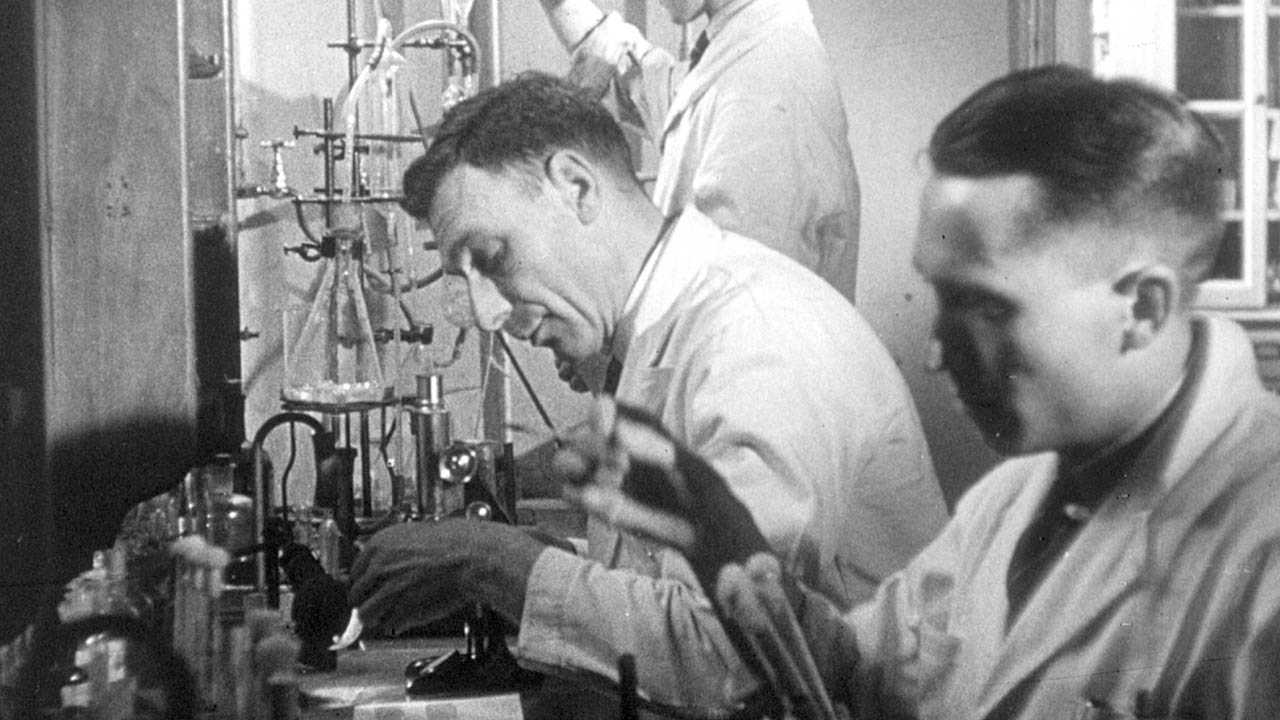DiphtheriaCorynebacterium diphtheriae

Symptoms and Causative Agent
Diphtheria is caused by bacteria called Corynebacterium diphtheriae. The bacteria secrete a powerful toxin that causes damage to body tissues.
Early symptoms of diphtheria are similar to a common cold. They include sore throat, loss of appetite, and fever. As the disease progresses, the most notable feature of diphtheria infection may emerge: a thick gray substance called a pseudomembrane may spread over the nasal tissues, tonsils, larynx, and/or pharynx.
The pseudomembrane is formed from waste products and proteins related to the toxin secreted by the bacteria. The pseudomembrane sticks to tissues and may obstruct breathing.
Transmission
Diphtheria is transmitted from person to person, usually via respiratory droplets. An infected person, unless treated with antibiotics, is infectious for two to three weeks.
Treatment and Care
Diphtheria treatment involves antibiotics to kill the diphtheria bacteria, plus antitoxin to neutralize the toxins secreted by the bacteria. Diphtheria patients are usually kept in isolation until they are no longer capable of infecting others, usually about 48 hours after antibiotic treatment begins.
Complications
The diphtheria toxin may travel to the heart, muscle, kidneys, and liver, where it may temporarily or permanently damage these organs. Complications from diphtheria may include myocarditis (damage to the heart muscle), neuritis (inflammation of nerves, which may contribute to nerve damage, paralysis, respiratory failure, and pneumonia), airway obstruction, and ear infection.
Diphtheria once was a major cause of illness and death among children. The United States recorded a high of 206,000 cases of diphtheria in 1921, resulting in 15,520 deaths (a case-fatality ratio of 7.5%). Diphtheria case fatality rates range from about 20% for those under age five and over age 40, to 5-10% for those aged 5-40 years. Diphtheria was the third leading cause of death in children in England and Wales in the 1930s. Diphtheria is rare in the United States today. Between 2004 and 2011, no cases of diphtheria were reported to public health officials. One case was provisionally reported in 2012. Two cases were reported in 2019, the latest year for which data are available.
Available Vaccines and Vaccination Campaigns
Immunization for diphtheria is accomplished with a toxoid (a modified version of the diphtheria toxin). Diphtheria toxoid is not given as a single injection, but rather is combined with tetanus toxoid and, often, pertussis vaccine in a preparation called Tdap, DTaP, Td, or DT.
Since the introduction of effective immunization in the 1920s, diphtheria rates have dropped dramatically in the United States and other countries that vaccinate widely. In 1974, the reach of diphtheria immunization expanded when the World Health Organization included diphtheria toxoid in its list of recommended immunizations for its Expanded Programme on Immunization for developing countries.
Between 2004 and 2008, no cases of diphtheria were recorded in the United States. However, the disease continues to play a role globally. In 2007, 4,190 cases of diphtheria were reported worldwide, which is likely an underestimate of the actual number of cases.
U.S. Vaccination Recommendations
The current U.S. childhood immunization schedule for diphtheria includes five diphtheria toxoid immunizations before age six years, plus one booster dose for adolescents. All diphtheria immunizations for children are given in an injection combined with tetanus toxoid and pertussis vaccine (known as DTaP).
Adults receive diphtheria toxoid in combination with a tetanus toxoid booster, which is recommended every ten years. The adult product can protect against tetanus and diphtheria (a vaccine known as Td) or tetanus, diphtheria, and pertussis (a vaccine known as Tdap).
More Information
For more information on diphtheria and its history, see the Diphtheria Timeline.
Sources
- Centers for Disease Control and Prevention. Epidemiology and Prevention of Vaccine-Preventable Diseases: Diphtheria. Atkinson, W., Wolfe, S., Hamborsky, J., McIntyre, L., eds. 13th ed. Washington DC: Public Health Foundation, 2015. (379 KB). Accessed 01/17/2018.
- WHO, Regional Office for the Western Pacific. Diphtheria. Accessed 01/17/2018.
Last update 9 April 2022